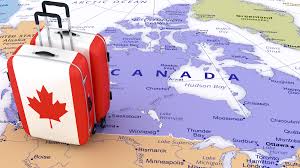Canada’s 2025 Immigration Levels Plan
Canada’s 2025–2027 Immigration Levels Plan has been released, outlining major policy adjustments that will shape how skilled workers enter and settle in the country. Unlike previous years where immigration targets consistently increased, the new plan introduces a gradual reduction in permanent resident admissions, paired with a strong shift toward economic-class immigration and in-Canada applicants.
Here’s what skilled workers need to know.
1. Canada’s New Immigration Targets for 2025–2027
Under the updated plan, Canada aims to welcome:
- 395,000 permanent residents in 2025
- 380,000 in 2026
- 365,000 in 2027
Meanwhile, temporary resident admissions will be tightened—but still remain a central part of Canada’s labour strategy.
This marks a controlled slowdown designed to manage housing pressure, labour shortages, and economic capacity.
2. Stronger Emphasis on Economic-Class Immigration
Even with reduced numbers overall, Canada is placing more weight on skilled-worker pathways. Economic-class immigrants will make up:
- 59% of PR admissions in 2025
- 62% by 2027
This means programs like:
- Express Entry
- Provincial Nominee Programs (PNPs)
- Canadian Experience Class (CEC)
- Skilled Trades pathways
will continue to be prioritized with faster processing and clearer targets.
Sectors like healthcare, skilled trades, tech, and critical infrastructure are especially important in this plan.
3. Big Advantage for Skilled Workers Already in Canada
One of the biggest shifts is Canada’s focus on applicants who are already living and working in the country.
IRCC plans to transition tens of thousands of temporary workers into permanent residents, especially those in:
- essential sectors
- rural and smaller communities
- high-demand industries like construction, healthcare, and caregiving
For temporary foreign workers, this is a rare window of opportunity—Canada is rewarding those who have already gained Canadian experience.
4. Changes to Work Permit Programs: TFWP vs. IMP
The plan adjusts how temporary workers enter Canada:
Temporary Foreign Worker Program (TFWP)
- Capped at about 82,000 workers per year
- More strictly tied to labour market assessments (LMIAs)
International Mobility Program (IMP)
- More flexible
- Prioritizes workers who support Canada’s broader economic, cultural, or trade interests
- May see relatively more admissions than TFWP
These shifts suggest Canada wants a more efficient and targeted temporary worker system.
5. Impact on Express Entry Applicants
Express Entry remains a key pathway—but with a twist.
What’s changing?
- Greater preference for in-Canada applicants, especially CEC candidates
- Category-based draws will continue targeting healthcare, STEM, trades, transportation, and agriculture
- CRS cut-offs may fluctuate due to lower overall immigration levels
For overseas applicants, competition will be higher, making strong profiles (language scores, education, work experience) more important than ever.
6. What Skilled Workers Should Expect Over the Next 3 Years
Challenges
- Fewer PR spots = higher competition
- Possible delays due to shifting priorities
- Stricter temporary resident quotas
Opportunities
- Fast-track PR for workers already in Canada
- More targeted draws for in-demand occupations
- Better options in rural, northern, and Francophone communities
The landscape isn’t closing—it’s shifting.
7. How Skilled Workers Can Position Themselves for Success
Whether you’re in Canada or abroad, here’s how to stay competitive:
If You’re Already in Canada
- Secure full-time employment in an in-demand field
- Maintain legal temporary status
- Watch for CEC-friendly draws
- Explore PNP opportunities in your province
If You’re Outside Canada
- Build experience in high-demand occupations
- Improve your CRS: language tests, education, work experience
- Consider study permits or employer-sponsored pathways
- Look into rural and Francophone programs for better odds
Canada is still actively seeking talent—just more strategically.
Canada’s 2025 Immigration Levels Plan brings balance, prioritization, and long-term stability. While the overall number of PR admissions will decline, skilled workers remain at the heart of Canada’s immigration strategy, especially those already contributing to the labour market.
For many skilled professionals, the coming years offer a unique chance to secure permanent residency—if they align their approach with the new priorities.
FAQs: Canada’s 2025 Immigration Levels Plan for Skilled Workers
1. What is Canada’s 2025 Immigration Levels Plan?
Canada’s Immigration Levels Plan outlines how many permanent residents the country intends to admit annually. The 2025 plan maintains high targets, focusing on economic growth, addressing labour shortages, and strengthening family reunification.
2. How does the 2025 plan affect skilled workers?
Skilled workers continue to be a major priority. Programs like Express Entry and the Provincial Nominee Program (PNP) receive significant allocations, making Canada highly accessible for individuals with in-demand work experience.
3. Are Express Entry CRS scores expected to drop in 2025?
Yes. With stable targets and more category-based draws, Canada is likely to continue lower CRS cutoffs for targeted groups such as healthcare, STEM, trades, French speakers, and transportation occupations.
4. Which skilled worker categories will be prioritized in 2025?
Priority areas include:
- Healthcare
- Construction and trades
- STEM (Science, Technology, Engineering, Math)
- Transportation
- Agriculture
- French-speaking candidates
5. What are category-based draws in Express Entry?
Category-based draws target candidates with specific skills or occupations that Canada urgently needs. Instead of selecting based on high CRS scores alone, IRCC chooses applicants in shortage sectors.
6. Will processing times improve in 2025?
Canada has been investing in digital processing and modernization. While overall improvement is expected, demand remains high, so some delays may persist depending on the program and visa office.
7. Is PNP still the largest immigration pathway?
Yes. The Provincial Nominee Program (PNP) continues to be the largest route for skilled workers, allowing provinces to select immigrants based on local labour needs.


Leave a Reply